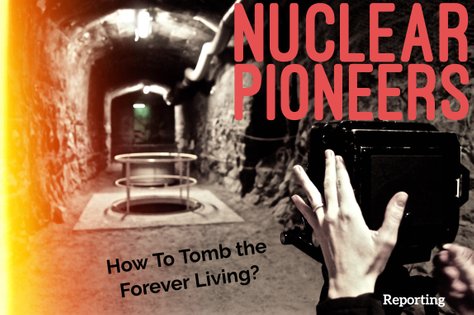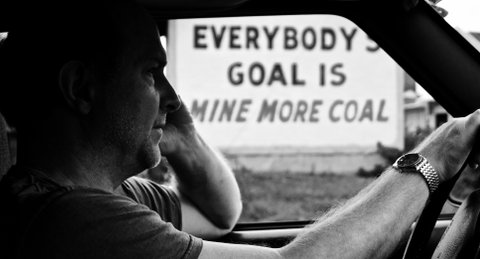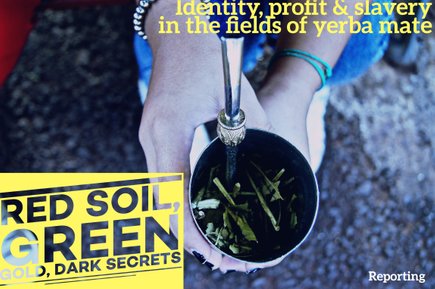Rugby in Argentina:
Structural Violence and Healing Tears
ESSAY | ARGENTINA [SVENSK VERSION]
Future generations will look back at 2023 as both a turbulent and victorious year for Argentine rugby. A year when the Argentine national rugby union team, “Los Pumas,” reached the semi-finals of the World Cup in France, and a year when rugby found itself being portrayed as a supporting actor in a sociopolitical tragedy about structural violence and fatal racism.
Rugby, this “sport of beasts played by gentlemen"— where opponents tackle, scuffle, scrum, and challenge each other for eighty-plus minutes and then said to unite the players in a collective embrace of dripping camaraderie after the final whistle — is neither deaf, dumb nor blind to the society that surrounds the pitch where the game is played, its training grounds where practice makes progress, where moral codes are held high, and cheating is considered a sin.
The creation of rugby springs out of various events during the 19th century, but according to its official origin myth the sport was born in England in 1823, when footballer William Webb Ellis thought better of it and merely picked up the ball and started running with it.
Later, migrants from the British Isles and Ireland exported rugby to far-flung outposts such as New Zealand, Australia, South Africa — and Argentina.
Murder by the sea
In February 2023, five Argentine rugby players were sentenced to lifelong prison sentences and another three dittos to 15-year-long prison sentences for the murder of Fernando Báez Sosa, an 18-year-old university student outside a nightclub in Villa Gesell, a pleasant coastal town not far from Buenos Aires, in January 2020. Inside the nightclub, a brawl erupted between two parties and Fernando Báez Sosa soon found himself detached from his friends and encircled by eight young men, aged between 21 and 23, who then killed the 18-year-old with their hands and feet.
“I’m gonna bring him with me as a trophy,” one of the perpetrators exclaimed during the assault, according to eyewitnesses.
Rugby is one branch, but not the root of the tree that shapes the complex political, contemporary, and historical atmosphere in which a young man was beaten to death on the pavement outside a nightclub. This tragic story must be told along with the background of the victim, his family, and from where and what they set out in search of a better life.
Migration south in quest of northbound social mobility
Fernando Báez Sosa was the only son of two Paraguayan immigrants, Silvino Báez and Graciela Sosa. They were part of something larger than themselves, the seemingly eternal and border-crossing dream of an improved life. Every year thousands of men, women, and children migrate south from Paraguay to Argentina in search of northbound social mobility. In Argentina, they soon found themselves positioned in the socioeconomic corner where “unwanted” bodies within the society are piled up — a zone reserved for “negros,” those who challenge Argentina’s self-image and self-proclaimed identity as a “white settler’s nation” (Gott 2007) more attached to Europe than the rest of the Latin American continent.
Silvino Báez and Graciela Sosa grew up in Carapeguá, a region in central Paraguay deeply affected by the long-lasting consequences of the War of the Triple Alliance (Centurión 2013 & Whigham 2017). A war in which Argentina, Brazil, and Uruguay launched a three-front-assault on Paraguay between 1860 and 1865. A war that decimated Paraguay’s population, stole large portions of its territory, and cultivated the unequal distribution of land and power that still rules in the landlocked nation.
Many Paraguayans thus find themselves with no other option but to leave their rural roots for the capital Asunción. For many, the journey continues, after being blinded by the lights, baits, and promises of Buenos Aires, mediated by the constant stream of soap operas, talk shows, and confusing and contradictory political narratives.
In March 2001, Silvino and Graciela’s only son Fernando was born. Silvino earned his living as a doorman and Graciela as an assistant to the elderly. Their son, however, was given the chance of that utterly sought-after class leap when given the chance to aim for an academic career as he entered Universidad de Buenos Aires to study law. An impressive feat accomplished thanks to a scholarship to study at Marianistas de Caballito, a school whose hefty monthly fees otherwise were financially beyond his parents’ abilities.
At the university, Fernando Báez Sosa took a liking to Julieta Rossi, a fellow law student, and in January 2020, as summer swept over Argentina and students enjoyed a well-earned break, the couple set out to celebrate their tenth-month anniversary in Villa Gesell. The young men who beat him to death in the street came from Zárate, a rural town along the Paraná River, north of Buenos Aires. During the trial, witness accounts made clear that the murder had deep underlying elements of racism, structurally planted in Argentine society.
In an open letter, Silvino Báez addressed the structural racism that played a crucial role in his only son’s death. The simple motive behind the deed was hate, the father wrote. “Perhaps the perpetrators felt superior as they were light-skinned, and Fernando’s skin was more colored.”
Color, class, and rugby
Although Argentina’s judicial system has proven capable of acknowledging racist motives in court cases such as Fernando Báez Sosa’s murder, much work remains to be done, according to Alejandro Mamani, a lawyer and member of Identitad Marrón, an Argentine anti-racist organization. “Fernando Báez Sosa’s case will be a watershed,” Mamani told the Guardian in the wake of the verdict that condemned five of the eight perpetrators to life-long prison sentences.
The judicial system, though, still has many miles to go before it can claim itself to be blind to color and class, he adds. There are still those who prefer to shut their eyes to the blatant motive and role of racism in the killing of Fernando Báez Sosa. “The judicial system simply doesn’t consider racism to be a reality in Argentina,” Mamani told the Guardian.
So how did rugby find itself amid a murder case scrummed by structural racism and historical narratives? Is it even justifiable? Right or wrong, the official Argentine rugby authority was pressured to act in the wake of public outcries, protest marches in several cities, and the continued mention of “rugby” in the reporting of Fernando Báez Sosa’s death, thus instituting “behavioral courses” for almost 4,000 domestic rugby players.
The perpetrators were also collectively dubbed as “los rugbiers” (“the rugby players”) in the Argentine press, thus adding spice to an already frantic and sensational-driven media sphere which intelligently rubbed the Argentine public where it constantly itches — on the collective sports nerve. All eight convicted were linked to the same rugby union amateur club in their native town, Club Náutico Arsenal Zárate (in Argentina rugby remains largely an amateur sport).
“The group leader” was a talented young rugby player, and many predicted him to one day be selected to put on the national shirt of “Los Pumas.” “That’s what I wish above all else, to be able to play at the highest level and then become a Puma, that’s a dream,” he told Area18.
When the interview took place, in 2016, he was a talented 17-year-old player — he was twenty when he chipped in and punched, beat, and kicked Fernando Báez Sosa to death. When his lifelong prison sentence was presented in court in February 2023, he was twenty-three. He fainted when the verdict fell.
Socially constructed violence
Is it necessary — or, for that matter, possible — to hang the entire world of rugby out to dry in the wake of a tragedy that occurred far away from the nearest rugby pitch? Or was rugby a part of the fatal cocktail of alcohol, machismo, and racism that ended with Fernando Báez Sosa’s death? “No man is an island,” wrote the English poet John Donne in 1624. In a constantly online global village where political currents, prejudices, and fictitious historical narratives reach you wherever you go, there is nowhere to shut out the noise, whether you are at home, at school, at work, in a park, or at shopping mall, or the rugby locker room.
“In this case, class plays an important role as most of ‘los rugbiers’ come from rich countryside families,” Guillermo Levy, a professor at the sociology department of Universidad de Buenos Aires y Avellaneda, told France24. Levy disapproved of the heated public opinion — with large ingredients of lynch elements — which he saw lacked a historical context. “This violence wasn’t born in January 2020, it’s socially constructed.”
Structural racism is organic and needs constant nourishment to survive and progress, which is why the Argentine state must act harder to attack the blatant lies and fake truths about immigrants and “non-white Argentines,” writes social scientist Julián Corvaglia in an essay for Perfil.
Witnesses to the murder of Fernando Báez Sosa heard members of the party shout insults with racist undercurrents during the beating session: “¡Negro de mierda, mátenlo!” (“Fucking black man, kill him!”) Despite being born in Argentina, Fernando Báez Sosa, and numerous other citizens of one of South America’s political and economic powerhouses, are regularly subjected to stereotypes and racist slurs rooted in a national self-image cultivated by post-independence political and social-Darwinist theories of the “ruling white man.”
Lies, narratives, genocide
One historical lie, and perhaps the most long-lived and officially accepted, is that Argentina was built by “Europeans.” Europeans — be it from Ukraine, Sweden, Italy, Spain, Wales, or Germany — reached the River Plate during the large-scale exodus during the 19th century in what was a state-funded immigration campaign, but to claim these settlers set foot on “terra incognita” simply isn’t true. Genocide was a key tool for the young republic which gained independence from Spanish colonizers in 1816. Then, regions such as the far away Tierra del Fuego, the plains of Pampas, or the jungles of Chaco needed to be cleared of indigenous tribes and Afro-Argentinian former-slaves-turned-farmers to make way for the European settlers.
The question is why “whiteness” became such an obsession in Argentina. The state erased any mention of “blackness” in its history books and tucked away “non-whites” in slums and near-famine situations, to underline the message that these were not welcome. Part of a politically sanctioned “white-washing project,” according to historian Erika Edwards (2020). Through new laws, which made interracial marriages even more difficult, the Argentine state simply let the Afro-Argentine minority vanish — along with most written memory and documentation of its existence.
“The idea that somebody could be the descendant of a slave is just not there,” Edwards told the Guardian in an interview. Although the exact “ethnic affiliation of the Afro-Argentines is unknown” due to various African regions from where slaves were forced to embark for South America, the number of current-day Argentinians with African ancestry is surprisingly high. But very few — if any — appear in public life, either as journalists, company executives, or politicians, which keeps the discrimination of Afro-Argentinians as a tucked-away issue.
“If it was not possible to physically eliminate Argentina’s Afro-descendants, the decision was to at least eliminate them symbolically, to create a discourse that there are no blacks in Argentina, that Brazil has that problem,” Edwards told the Guardian.
“Yes, it was us”
In retrospect, in the eyes of future generations who look back at the pointless killing of Fernando Báez Sosa on a night when he and his fiancée celebrated ten months together, the one thing that stands out is an open letter, published on various social media outlets, by Tomas Hodgers, an Argentine rugby union player. Words about shame, about parallel ideals hidden behind an official façade, covered by words of “good faith on the pitch and of respect towards the authority.”
Tomas Hodgers’ open letter starts with a thoughtful confession: “Yes, it was us.” “We set an example and we believe ourselves to be morally and physically superior to the rest. It is due to this collective narcissism, this fictitious conviction that we have of ourselves that no one, not a single person within the rugby environment, dared to say that it was us,” he continued.
Filling “our mouths talking about Nelson Mandela and respect for the referee” doesn’t cover the fact that rugby has a civic role to play — and therefore must be mirrored against its current place and historical position in Argentine society. Why is it — asks social anthropologist Sebastián Fuentes (2021) — that women join rugby clubs “with a stronger working-class component than their masculine counterparts,” and even indigenous communities?
Fuentes’ research on “Male Bodies in Late Capitalism” focuses on the ongoing professionalization of Argentine rugby, which rewrites social contracts and uproots long-lived structures of kinship, reciprocity, and ascribed status. The lure of professional contracts, status, and sports achievements in prominent rugby union leagues, primarily in Europe, alongside increasing capital in the domestic rugby body, has launched a social and geographical migration process within Argentine rugby — and society. The dynamics, writes Fuentes, “mobilize conflicts, resistance, and support among the traditional amateur clubs, which up to this point have constituted the heart of the sport in Buenos Aires.”
The clubs became breeders of tomorrow’s Men of Power in Argentina. Within the structures, compounds, and locker rooms of these clubs, young men were “formed into gentlemen through amateur rugby,” Fuentes concludes. He adds: “They were expected to become the heirs of upper-middle- and upper-class families and of their class, gender, and moral hierarchies. Today rugby remains an important social activity within this class and a way in which social boundaries are marked and maintained.”
The question is whether Argentine rugby will continue to foster future generations of Argentine lawyers, politicians, bankers, and journalists with what Fuentes labels as “the moral value of amateurism,” or if lucrative professional contracts will have long-term consequences for deeply rooted social and economic hierarchies in the towns where the biggest clubs are based, the vast majority in Greater Buenos Aires.
Healing tears of rugby
In one way or another, rugby as a sport and rugby players as citizens of Argentina will continue to be part of society. In that society, Fernando Báez Sosa was slayed by a scrum of young men attached to an amateur rugby club. But in that same society, rugby offers glimpses of light for those trapped in bleak tunnels.
Inside Penal 48, one of Argentina’s high-security prisons, situated in Greater Buenos Aires, rugby offers exercise, team building, meditation, organization, and therapy for inmates (Farchi, et al. 2021). “Rugby thus bridges two dramatically disconnected worlds, bringing about change in a setting of chronic societal displacement that entrenches lasting social divisions,” concludes the research team. Introduced and initiated in 2009 by criminal lawyer and ex-rugby player Eduardo “Coca” Oderigo, rugby leaped into socially unchartered territories, offering training sessions every week.
“Rugby is an elite sport associated with the upper classes, whereas the vast majority of inmates come from deprived backgrounds,” the research team notes. Prisoners at Penal 48 had “no prior experience with the sport and the prevailing perception was that rugby was a ‘posh’ sport for society’s elite,” associated with “independent schools, exclusive sports clubs, and society’s elite ruling class.” Yet, rugby’s physical aspect and call for concentration and both mental and embodied preparedness strike a chord among many participants.
Inside Penal 48, homemade knives were exchanged for a rugby ball, arrogance for respect, and an insult for a tackle. One inmate, Jesus, recalls the first time he was invited to play rugby for the prison team, the Spartans, after a sojourn in an isolation cell.
“I felt that for the first time, I belonged to a family,” he says. “Tackling is the best thing that could happen to me because I felt so much anguish … many people can cry, but I could not … until I met Nico Degano [one of the rugby coaches]. He taught me how to cry.”
Rugby, Jesus adds, also makes the thought of a life outside the high-security prison less frightening. “I know being out on the streets won’t be easy, but I’m feeling positive about it. I want to go on playing rugby, getting a job, being back with my family, coming to visit Sparta, doing the right things, and not make the mistakes that brought me here.”
References (a selection)
Corvaglia Julián (2022) “Argentina, un país elegido por miles de migrantes.” Perfil (20 October 2022) (https://www.perfil.com/noticias/opinion/argentina-un-pais-elegido-por-miles-de-migrantes.phtml).
Centurión, Gaspar (2012) “Memoirs of the Paraguayan War” (previously published as “Recuerdos de la guerra en Paraguay” in Testimonios de la Guerra Grande). In: The Paraguay Reader (editors Lambert, Peter & Nickson, Andrew). Durham: Duke University of Press.
Edwards, Erika Denise (2020) Hiding in Plain Sight: Black Women, the Law, and the Making of a White Argentine Republic. Tuscaloosa, AL: University of Alabama Press.
Farchi, Tomás, et al. (2021) Freedom Behind Bars: The central role of emotions in naturalizing an analogy for social change. Sage Journals. Vol.43, No.10 (October 2021). https://doi.org/10.1177/01708406211053214.
Fejerman, Laura et al. (2005) “African Ancestry of the Population of Buenos Aires.” American Journal of Physical Anthropology. September 2005 (doi: 10.1002/ajpa.20083).
Gott, Richard (2007) “Latin America as a White Settler Society.” Bulletin of Latin American Research, Vol.26, No.2 (April 2007), pp.269–289.
Seldin MF et al. (2007) “Argentine population genetic structure: large variance in Amerindian contribution.” American Journal of Physical Anthropology (Mar;132(3):455-62. doi:10.1002/ajpa.20534. PMID: 17177183; PMCID: PMC3142769.).
Whigham, Thomas (2017) The Road to Armageddon: Paraguay Versus the Triple Alliance, 1866–70. Calgary: University of Calgary Press.
* * *
HEM/HOME/CASA





